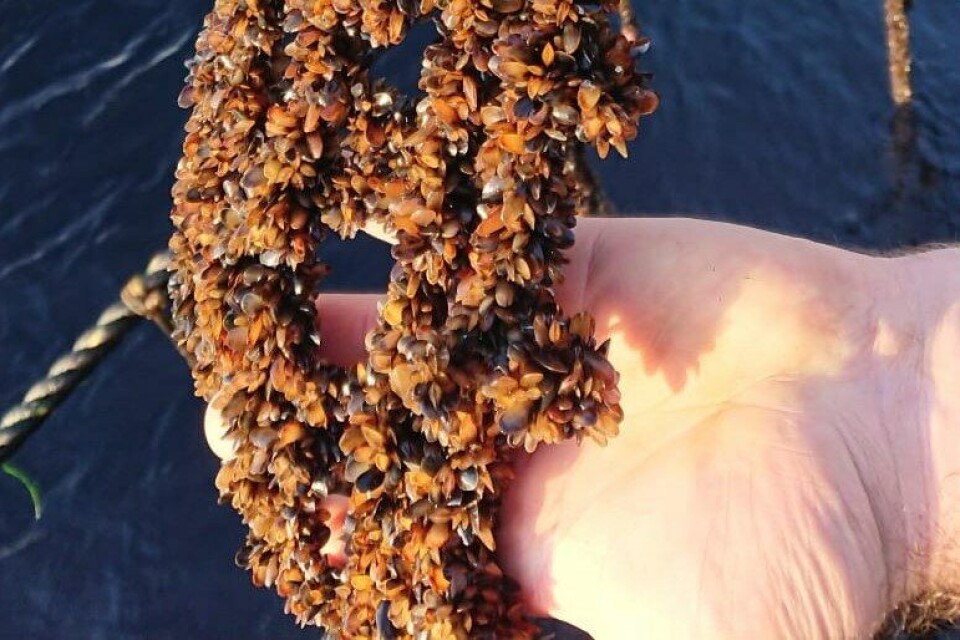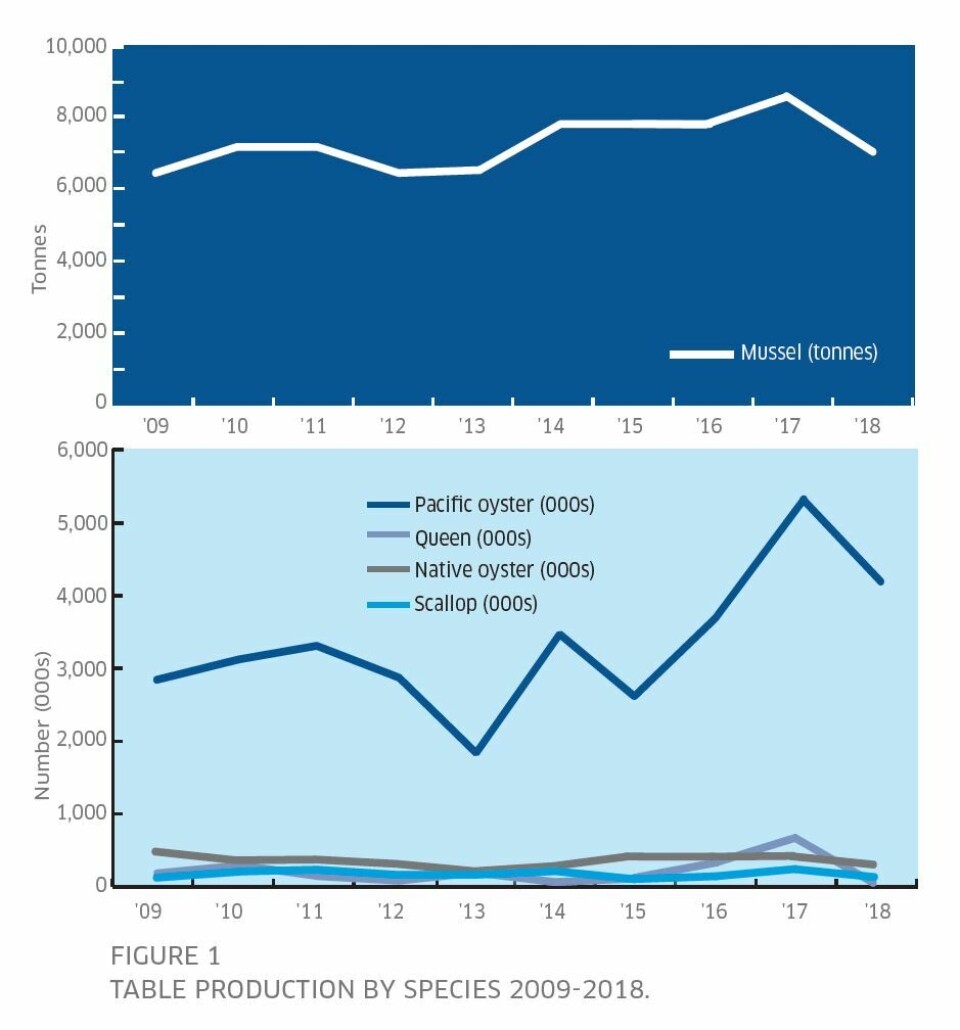
Shellfish association chief upbeat despite 2018 production drop
The amount and value of farmed shellfish harvested in Scotland in 2018 fell compared to the year before, Scottish Government figures show.
The number of mussels produced for the table dropped by 16% to 6,874 tonnes, and the number of Pacific oysters was down by 20%, while the amount of people employed in the industry also decreased.
The total value at first sale for all species was calculated at approximately £9.5 million, a decrease of 23% from the £12.4m estimated in 2017.

Positive long-term trend
However, Nick Lake, chief executive of the Association of Scottish Shellfish Growers (ASSG), was unworried by the figures and pointed out that the long-term trend was generally positive.
“The headline figure is the production fall but that’s a year-on-year approach,” said Lake. “It takes three years to produce an oyster, two to three years to produce a mussel, so what’s the [longer-term] pattern? The year before last was a particularly good year, so 2018 looks as though it’s a bad year but if you average it out over three or four years, it’s not that different.
“There’re no underlying problems that we’ve detected, it’s more a case of what you put in the water two or three years ago is what’s showing in those production figures now.
“We haven’t lost any big companies, we haven’t had any disease problems, but in some cases there’s been a shortfall of spat, in some cases they may not have grown that well or been managed in the same way.
“It’s not a disaster, but equally we want to see that we’re making onward progression.”
The production figures are included in Marine Scotland Science’s Scottish Shellfish Farm Production Survey 2018, in which the author of the report, MSS epidemiology data manager Lorna Munro, also points out that historical data for all shellfish species show that production levels vary year on year. Questionnaires were sent to 130 businesses registered as active during 2018 to get the information for the report.

Shortage of spat
One area of concern the report highlighted was the difficulty mussel growers had in collecting enough wild spat for their needs.
Responses were received from all of the 232 sites authorised for mussel production in 2018. Of these, 136 (59%) were spat collection sites, only 55 (40%) of which reported that they had sufficient spat settlement for production purposes.
Lake said that was something that mussel experts from several countries would be discussing at a workshop in Oban on October 30, which is the inaugural meeting of the North Atlantic European Mussel Organisation (NAEMO).
“Seed supply for mussels is a wild supply situation, and the day before our annual conference this year we are hosting an international workshop on mussel seed supply and wild mussel stock because we are very dependent on that,” said Lake.
“That’s not just a Scottish issue, it’s a north Atlantic issue in terms of where blue mussel stocks are and what’s happening.
“There’re people coming from Canada and Denmark and Sweden and all around, because it is a bigger issue about where are we potentially in this whole blue mussel cycle and seed supplies, etc.”
9% fewer employees
Scotland’s shellfish industry employed 137 full-time and 161 part-time and casual workers during 2018 – a fall of nine full-time staff and 21 part-time and casual employees (9% in total) compared with 2017.
“The headline always for us is employment, and that’s down, but of course if tonnage is down some of the seasonal employment is down,” said Lake.
“Also, we are becoming a more efficient, more mechanised industry. We would like employment to stay up because we’re having new people coming in and new sites opening, but if we stayed static then of course employment would go down because we’re becoming more efficient.”
He added that the shellfish sector was not too far away from the Scottish aquaculture industry’s Vision 2030 target which envisages overall shellfish production of 21,000 tonnes by that date, with more than 18,000 tonnes of that being mussels.
Quality in demand
Lake also stressed that quality was crucial for Scottish shellfish, which in volume terms is a relatively small player compared to the half a million tonnes produced in Europe and the 400,000 tonnes grown in Chile.
“The markets for oysters have never been so buoyant and we’re supplying into them. It’s a good indication that the quality of the shellfish we’re supplying is in demand,” he said.
“It’s the same with mussels, and especially the processed mussel products: demand is really good, so we must be doing something right in terms of the quality side of it.
“Yes, we would want to be producing more but we’re not just going to chase volume for the sake of chasing volume.”
Download the production survey report here.






















































